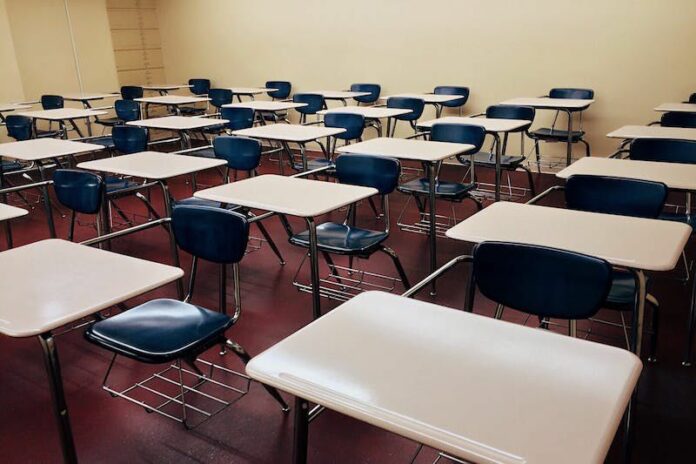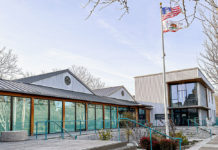(Editor’s note, the letter and interviews for this story were completed prior to the most recent state and local heath orders being announced on July 10 and 13. Numbers and other factors cited below may not reflect the most current reality. We will update this article as more information becomes available).
On July 8, the California Teachers Association (CTA), the state-wide teacher’s union, sent a letter to Gov. Gavin Newsom, Assembly Speaker Anthony Rendon, Senate Pro Tem Toni Atkins and Superintendent of Public Instruction Tony Thurmond affirming their support for distance learning at the start of the school year. The letter cites the numerous health and safety concerns the union has for its members, as well as the children in their care. CTA boasts over 300,000 members. The Times reached out to local teachers associations to get their take on the letter.
“Since schools closed in March, CTA has said that the health and safety of our students and educators must always be our top priority and our guiding principle during this crisis,” begins the letter. “Much is still being learned about the COVID-19 virus. The recent surge in the infection rate and the closure of indoor activities in 26 counties gives us pause around the state’s preparedness for safe in-person school instruction in a short six- to eight-week time frame. In this current situation, we believe that the “Precautionary Principle” should guide us. This means taking the most preventative action in the face of uncertainty to protect students, educators, and our communities. Simply said, California cannot reopen schools unless they are safe.”
One of the biggest challenges for individual districts, according to CTA’s letter, is the disparity in resources from one district to the next, making a blanket policy for the state nearly untenable.
“Unfortunately, many local districts and communities don’t have the necessary resources or capacity to maintain even the most basic prevention measures of six feet physical distancing and limiting contacts, much less the other important preventative actions such as personal protective equipment (PPE), testing and tracing, or adequate ventilation and cleaning supplies,” said the letter.
Included in that option, is the reality of how difficult many of the necessary safety measures will be to implement, regardless of the resources available.
“While no one method of prevention by itself is 100 percent effective, layered strategies boost prevention with each measure knocking off some percentage of exposure and potential infection. This includes a clear and manageable plan to implement measures like physical distancing of six feet, reducing the number of contacts, face coverings, handwashing, daily health screening, support for sick and at-risk people to stay at home, robust testing, good ventilation (with absolutely no recirculated air), and cleaning and disinfecting,” said CTA, continuing on to point out the absurdity of reopening schools with a lower safety threshold than those for restaurants and hair salons.
Among the actions CTA would like to see taken at the state level are:
- a uniform symptoms checklist and safety protocols
- data transparency and accessibility
- increased testing dedicated to schools for students and staff
- rapid case notification and contact tracing
- isolation support and medical care for vulnerable students and families
- health monitoring of students to serve as early understandings of transmissions in schools and warnings of any school-based outbreaks
- the development and implementation of training for all school districts on safety protocols and direction that Illness and Injury Prevention plans be updated and adopted prior to the first day of in-person instruction
“As educators, we too want to be back with our students doing the work that we love, but we cannot ignore science, facts and safety,” said the letter. “Absent a specific plan for each school that includes a clear line of responsibility and accountability we have two options, a high-risk in-person opening, even under a hybrid model or start the new school year under robust distance learning protocols until the virus is contained in local communities and proper safety measures can be put into place.
“It is clear that communities and school districts have not come close to meeting the threshold for a safe return to in-person learning, even under a hybrid model,” CTA concludes.
The letter is signed by CTA President E. Toby Boyd and CTA Vice President David Goldberg.
Local teachers’ unions have their own view of CTA’s letter, though they are largely in agreement.
Windsor District Educator’s Association (WDEA) President Pete Stefanisko, is hopeful that more time will bring more clarity, but believes in the meantime the best thing is for districts and educators to work together.
“We do share some of CTA’s concerns as the situation has changed drastically over the last few weeks. Mid-June, we were expecting a hybrid model, but that has changed with the rise of new cases,” he said. “WDEA does not have an official position yet about distance learning or a hybrid model. Teachers definitely want to be with students in the classroom, but it has to be safe for students, staff and the community. We will hopefully know more in the next few weeks.
“(However), the planning process has been going well. We are working with Windsor Unified School District on various committees to figure out what schools will be like when we start in August. At no time have I felt the district is trying to force teachers back too early or in unsafe conditions. In many ways, we are working together better than we have in the past, and I would like that to continue,” Stefanisko concluded.
In Cloverdale, safety concerns are pushing teachers to favor distance learning.
“We know our teachers want more than anything to return to their classrooms, to work with students, to do what we love,” said Teacher’s Association of Cloverdale (TAC) president Erika Sauder. “Unfortunately, with cases on the rise, it just doesn’t seem wise to ignore science. Even with a hybrid model, there is risk, and safety for students and staff has to be the top priority. We know face-to-face instruction and peer interactions are necessary and far more beneficial for our students, but in order to open and return safely, we simply need more resources.”
As cases have increased, and Newsom announced new statewide and local closures on July 10 and July 13, the hybrid model appears less and less likely. Previous statements indicated that if an area was in “Phase 2” that in-person learning would not be allowed, though so far it isn’t clear whether these new closures represent a backwards step in phases or simply a modification of the current phase. However, on July 13 school districts in San Diego and Los Angeles announced they were definitively choosing to remain with distance learning for at least the fall semester.









